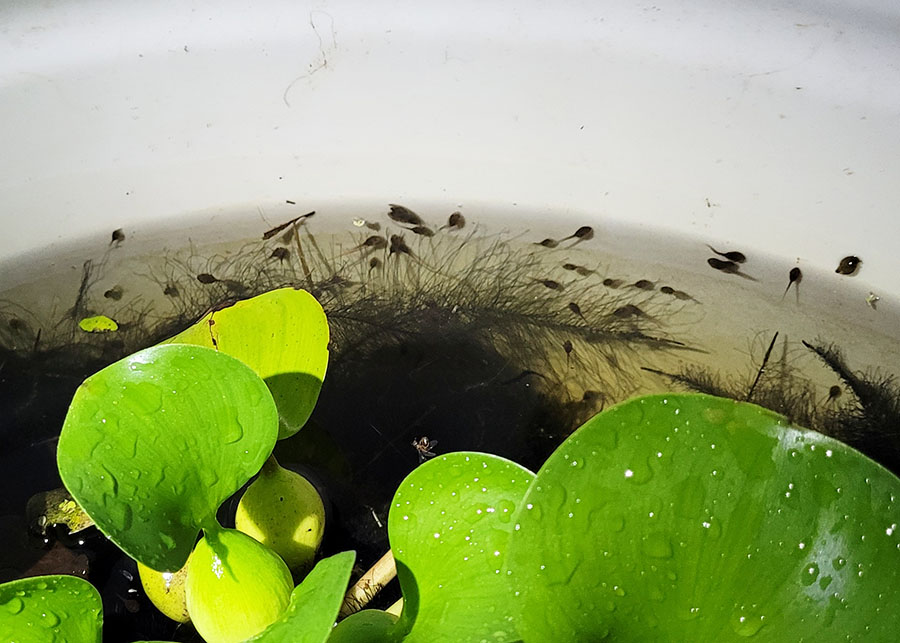At the bottom of this post are two videos of tadpoles of the Green Frog (Lithobates clamitans) swimming in experiment tank #6. One video is from June 27, 2022, and the second is from June 30.
Juvenile Green Frogs have laid several clutches of eggs in all eight experiment tanks. Cope’s Gray Tree Frogs (Hyla chrysoscelis) have also laid several clutches of eggs in every tank as far as I can tell.
The tadpoles of the Gray Tree Frog are significantly smaller than these Green Frog tadpoles, and they are also less numerous, and so I don’t have any idea how many are surviving the Amphibian Chytrid Fungus.
Chytrid is killing roughly half of the Green Frog eggs before they hatch, and I’m guessing that it will take roughly half the tadpoles before they leave the pond as miniature adults.
That’s still a huge number of survivors each year, and the ponds appear to be saturated with frogs of reproductive age, with some surprisingly large individuals, to the extent that younger adult Green Frogs eagerly invaded the experiment tanks to mate.
Hopefully with the survivors breeding and increasing in numbers each year, we can have a fully resistant strain in a few years.
I wish I had similar estimates for the Gray Tree Frog population, but the adults are elusive and camouflaged with color-changing skin, and the tadpoles may be as well.
I also can’t rule out that a lot of the smaller individuals I’m seeing aren’t actually Gray Tree Frog. I just always assume they are from the most-recent clutch of Green Frog eggs, because there is a new clutch every week.
I don’t know how much an impact the Green Frogs are having on the Gray Tree Frog population, but I Greens are larger and eat everything including other frogs.
I need to make chicken wire covers for each experiment tank to keep out the Green Frogs.
I just hope their tadpoles aren’t creating food pressures on the tree frog tadpoles in this season.
